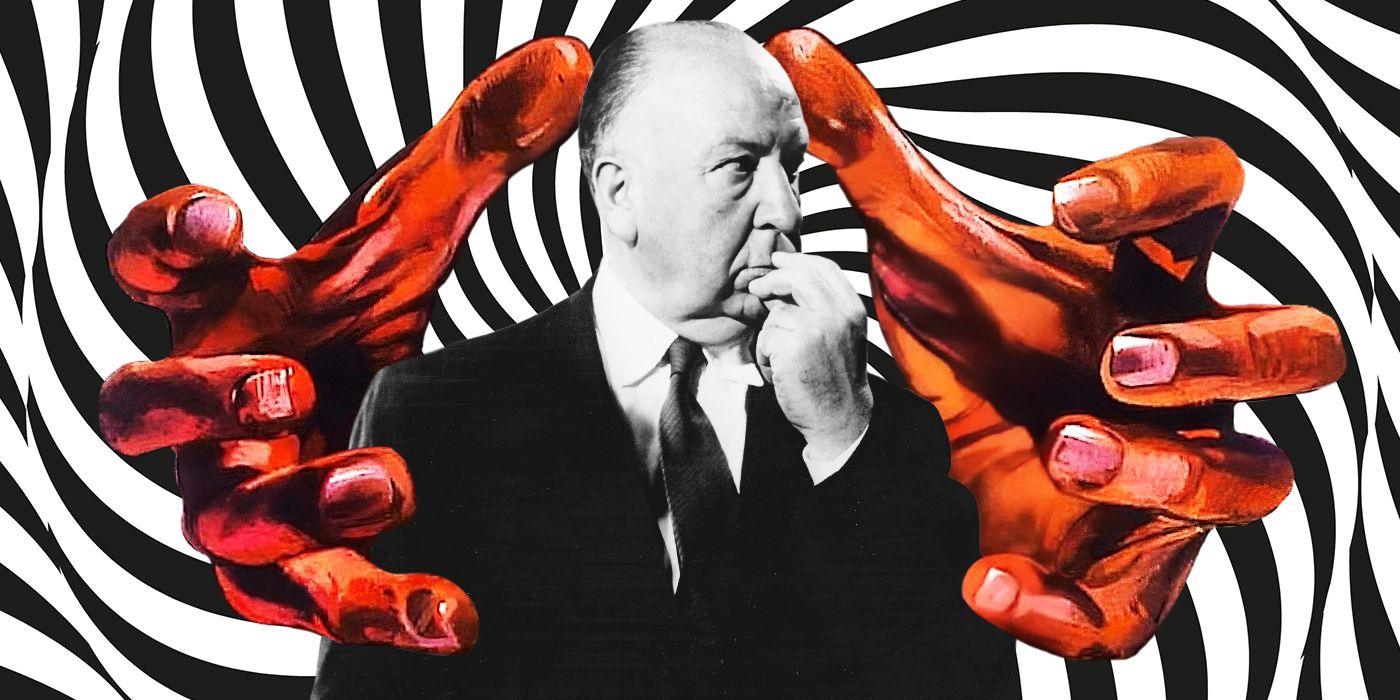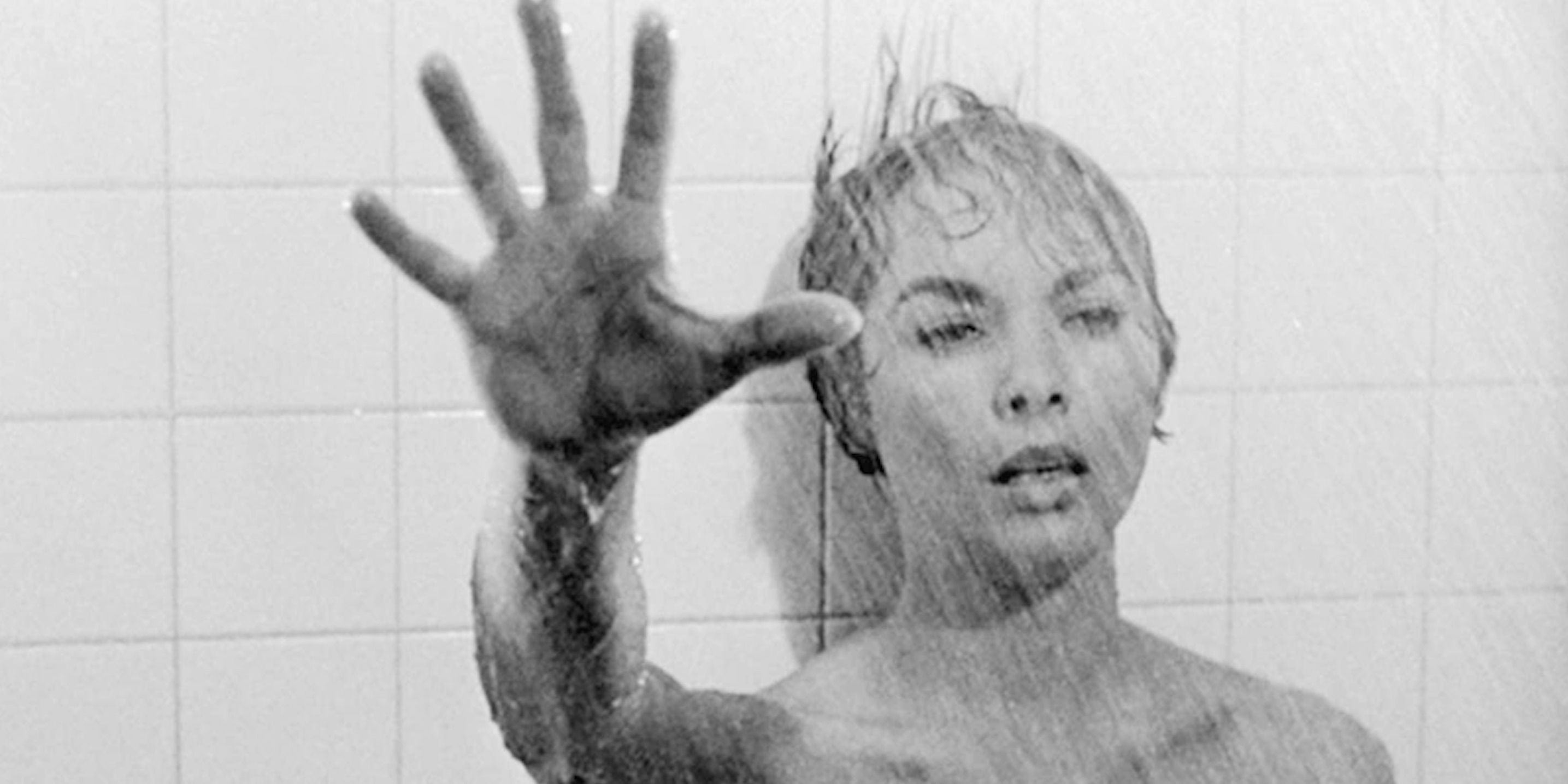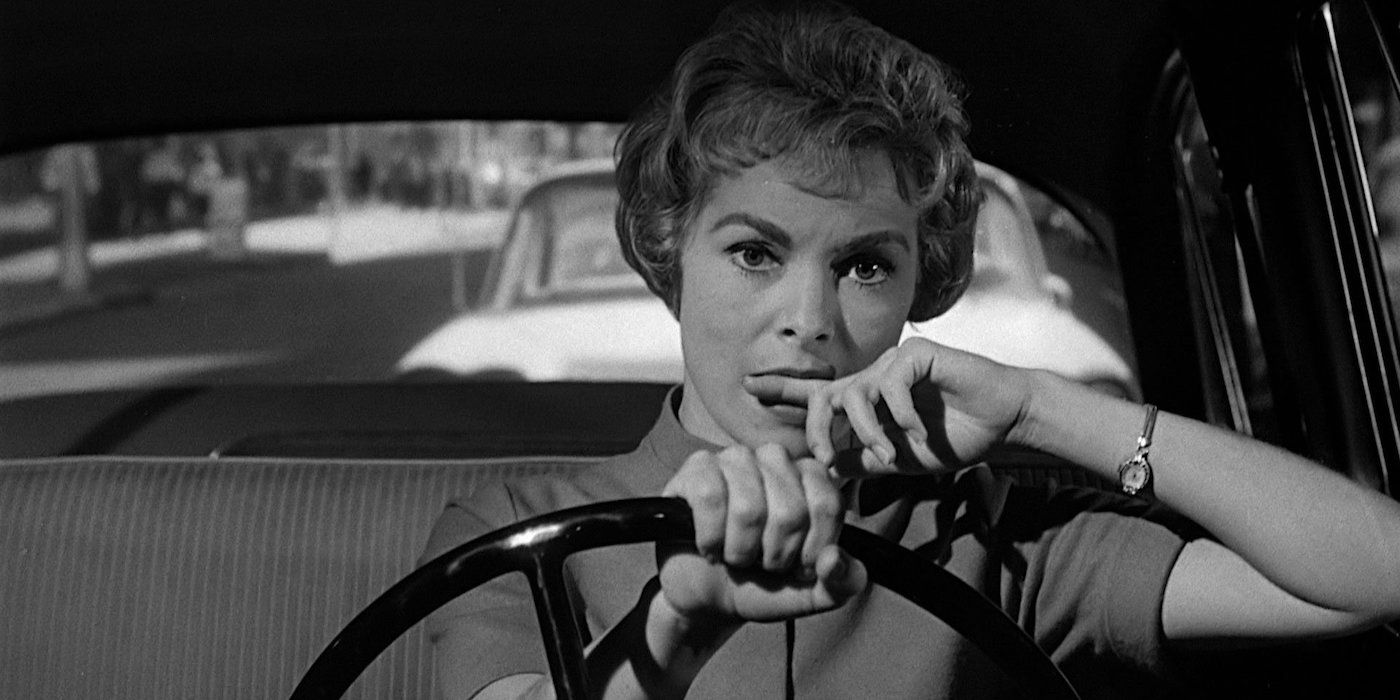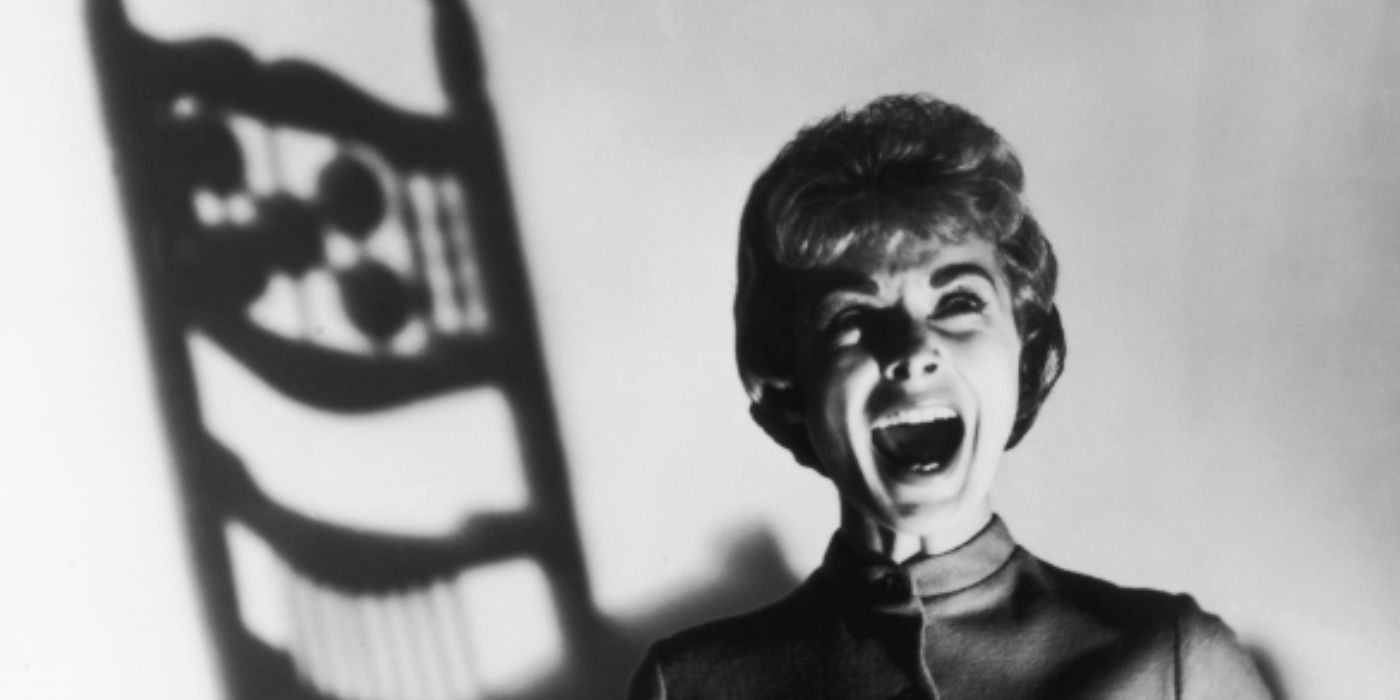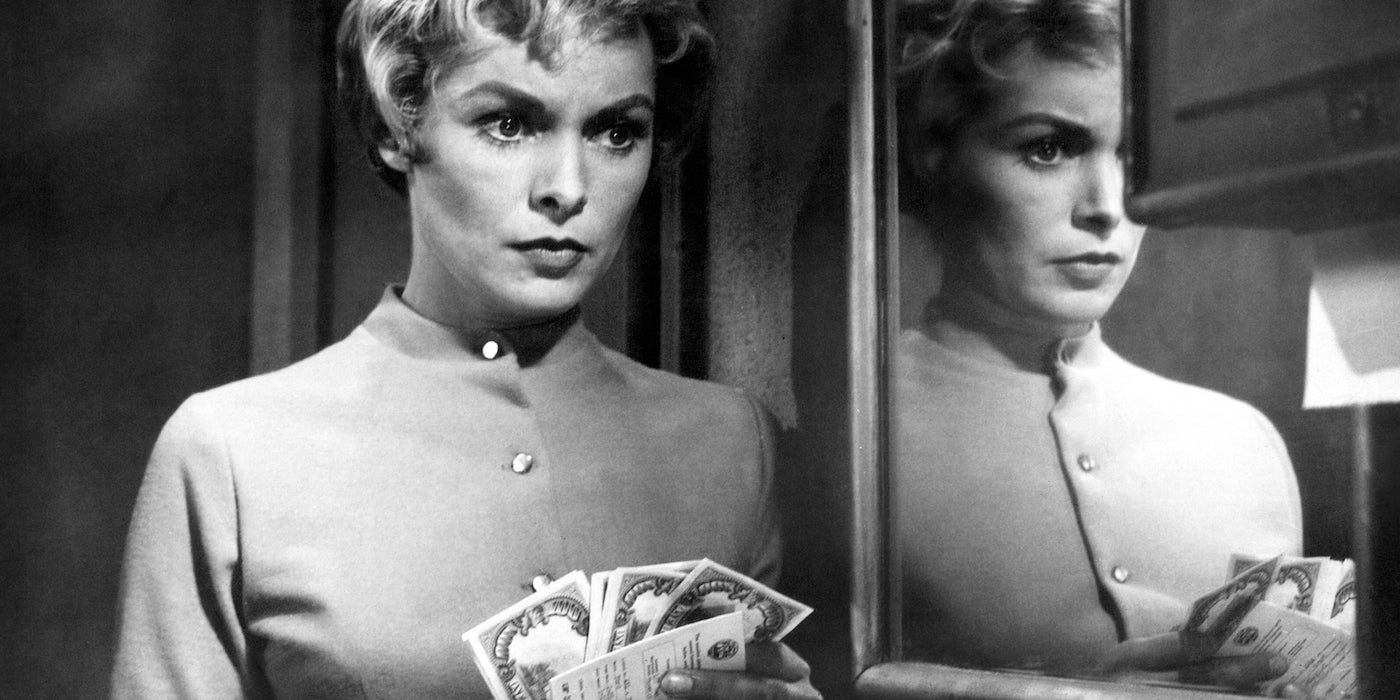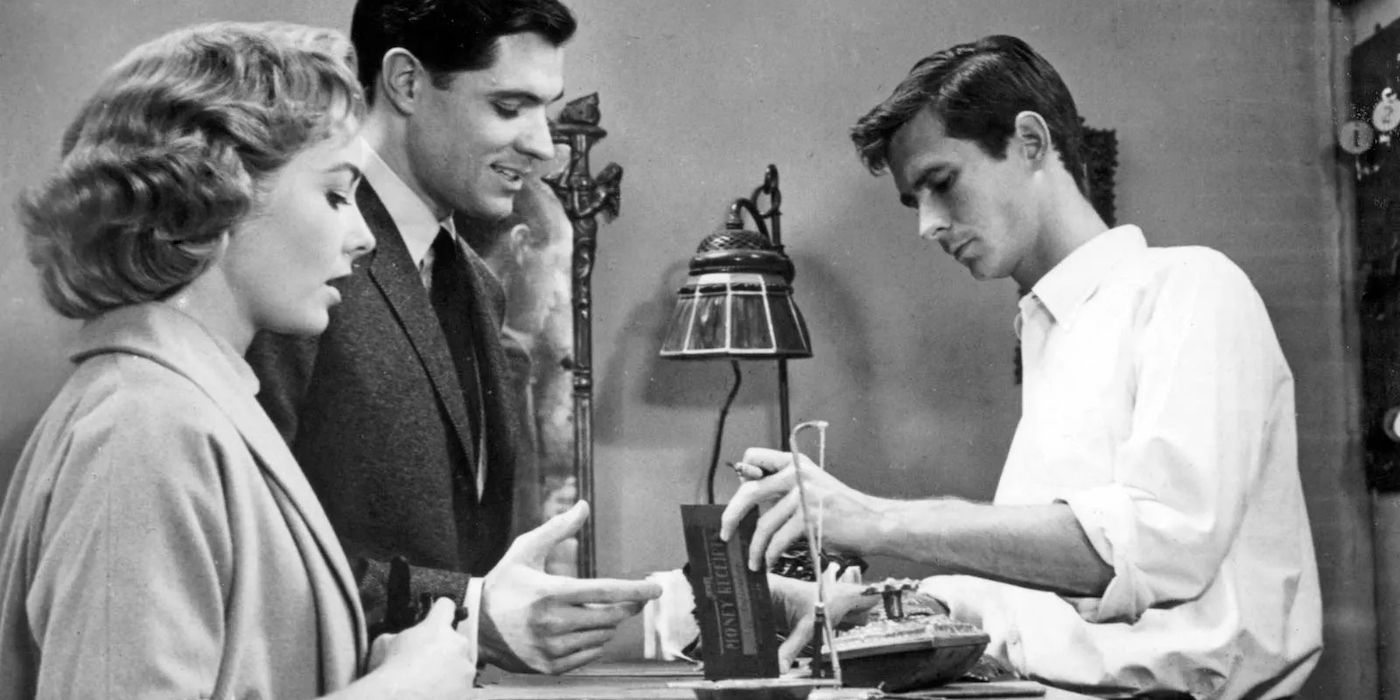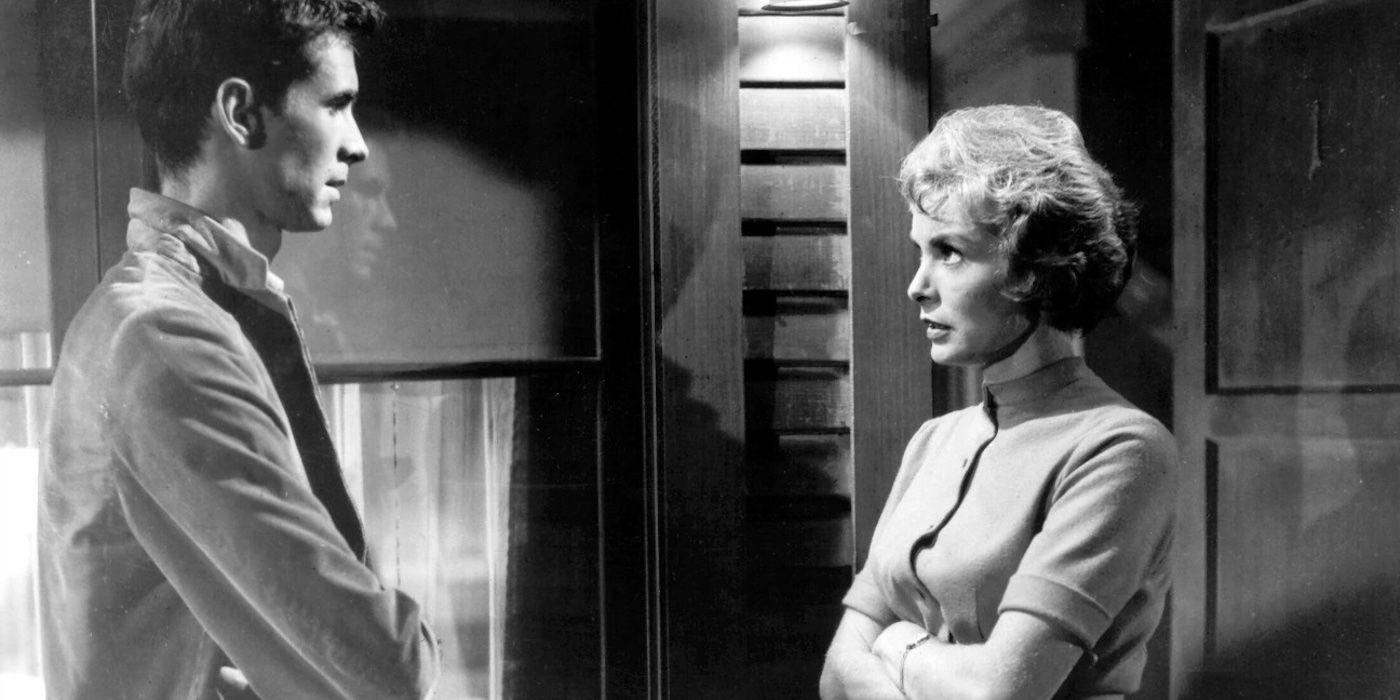The Big Picture
Seminal director Alfred Hitchcock made Psycho, widely considered one of the best films of all time, at 60 years old and on a shoestring budget. After a career already responsible for films that are the bread and butter of both scholars and students — Dial M for Murder, Rear Window, Vertigo, and North by Northwest – the meticulous master of suspense turned his exacting eye toward something new. Hitchcock chose author Robert Bloch’s novel of the same name for his first full-tilt foray into the horror genre. Both versions of Psycho are a fictional tale based upon the crimes of real life serial killer Ed Gein (who also inspired Thomas Harris’s The Silence of the Lambs). But between the violent subject matter of Bloch’s book and Hitchcock’s inconsistent box office returns, Paramount Pictures wasn’t having it. Ever the mercurial inventor, Hitchcock got crafty in the creation of his lowest-budget movie.
What appealed to Hitchcock about Bloch’s novel was making the audience care for a character and then brutally killing them without warning. Although the director’s prior films built tension to unbearable heights, Hitchcock’s protagonists usually emerged alive. This time, he wanted to pull the mother of all twists on unsuspecting viewers. After becoming enamored with the financially successful low-budget horror films from Hammer Studios and American International Pictures, Hitchcock even dismissed his previous work as “glossy Technicolor baubles.”
The director’s attitude combined with the genre was a blessing in disguise. Paramount executives turned down Hitchcock’s proposal; their hatred for Psycho was so adamant they banned Hitchcock from using their studio lots. Hitchcock, like a dog fixated on a bone, later manipulated Paramount into a corner by refusing his normal $250,000 director’s fee and offering to finance Psycho himself. The studio finally conceded.
How Did Alfred Hitchcock Save Money Making ‘Psycho’?
With locations and distribution secured, Hitchcock cut corners wherever viable. Rather than hiring outside talent per usual Hollywood standards, he hired the production crew of his existing (and successful) television series Alfred Hitchcock Presents. He also lowered the budget by filming in black and white. When cinematographer John Russell expressed concern and confusion over that choice, Hitchcock replied: “But, dear boy, it will have so much more impact in black and white.” (Russell’s work on Psycho earned him an Academy Award nomination for Best Cinematography.)
In the name of further cost reduction, room designs maxed out at a few thousand dollars each. Crews assembled the iconic Bates Motel exterior from scratch for $15,000. Hitchcock described the architecture as “California Gothic,” and the shiver-down-the-spine sensation of the building’s look testifies to its visual effect.
Yet don’t let these changes from Hitchcock’s established style fool you: he pre-planned Psycho as extensively as ever. He shared with film critic Roger Ebert how essential scriptwriting and storyboarding were to his process: “I visualize a picture right down to the final cuts,” he said. “I know it all by heart [while filming], just like an orchestra conductor needs not look at the score.” By the time the cameras rolled, the crew knew exactly what set-ups Hitchcock expected down to the camera lenses — the director insisted on using 50-millimeter lenses for most of Psycho, which approximated human eyesight closer than any other lens. Hitchcock knew exactly what he wanted and had the experience to quickly achieve this vision. Lead actress Janet Leigh observed that “Perhaps none of his other films were shot as fast as Psycho. But any less-well-prepared director might have taken far more time to shoot Psycho”
‘Psycho’ Needed the Right Actors
To that end, Hitchcock worked closely with screenwriter Joseph Stefano. The two re-worked the novel’s much older and explicitly nastier Norman Bates into the “tender, vulnerable young man” that actor Anthony Perkins immortalized in the role that vaulted him into the annals of cinema history. Hitchcock suggests Perkins actually inspired the change, as Stefano saw a wealth of opportunity for audience manipulation “of the highest order.”
Perkins himself was dedicated to delivering the most thoughtful and nuanced performance possible. Wardrobe expert Helen Corvig said of the youthful actor, who had already garnered attention for his Acadamy Award-nominated turn in Friendly Persuasion, “I believe [that seriousness] impressed Mr. Hitchcock and even touched him.” When Perkins, who was naturally shy, brought his suggestions to Hitchcock, the director trusted Perkins’ insights enough to let him implement them. That collaboration resulted in the famous scene where Norman casually chews candy corn while Detective Arbogast (Martin Balsam) interrogates him just as casually. For Perkins, it was to signal Norman’s innocence outside of his “Mother” persona; Hitchcock framed the act as menacing.
Hitchcock and Stefano also agreed that if they cast a marquee actress, Marion’s death would carry even greater shock value. Janet Leigh was well-known for her roles in Orson Wells’s Touch of Evil but lacked the same level of fame as Hitchcock’s prior blonde actresses like Grace Kelly or Ingrid Bergman. Hitchcock nevertheless agreed to her casting as Marion Crane and on set, the two got along like a house on fire. (For her role as Marion, which proved just as legendary as Perkins’ turn, Leigh won the Golden Globe for Best Supporting Actress and was nominated for the Academy Award in the same category.)
Alfred Hitchcock Filmed ‘Psycho’ Like a Television Show
With his chess pieces assembled, the maestro of manipulating audience emotion filmed Psycho basically like an extra-long episode of Alfred Hitchcock Presents. The crew shifted through many scenes each day and a handful of takes for each. Hitchcock’s rigorous storyboarding – mental and literal – paid off in this regard, as did his notoriously iron-clad control over the actors’ physical blocking. Even Marion wearing a white bra in the opening scene followed by a black one when she absconds with the money was an intentional, heavy-handed metaphor notwithstanding.
Understandably, the shower scene proved the most logistically complicated. In Hitchcock’s words: “It took us seven days to shoot that scene, and there were seventy camera setups for forty-five seconds of footage.” Hitchcock’s ambitious idea to edit the scene “staccato”-like, cutting back and forth between numerous angles, demanded some ingenuity from everyone involved. The crew assembled unique camera and lighting positions, going so far as to cut holes into the set walls.
But Hitchcock wasn’t above pivoting to simpler set-ups if his ambitions proved too complex for the budget. For the shot pulling back from Marion’s unblinking eye, editor George Tomasini pieced together three separate dolly shots into one motion. Even Marion’s blood was just chocolate syrup. Much like the rest of the film, simpler was more effective. The lens choices, camera positions, and sets highlight Marion’s isolation long before the shower scene — a privacy that’s violated in the most direct way with her murder. As ruthlessly efficient as the scene is, not to mention its legacy, the week of filming wasn’t time ill-spent. Hitchcock achieved his concept of what defines “pure cinema”: conveying atmosphere, emotion, and story through visuals alone.
‘Psycho’ Inadvertently Invented Spoiler Warnings
Psycho’s marketing phase required utter secrecy from its cast and crew. The production had been a closed set, with Hitchcock keeping the final pages secret even from the actors. Paul Jasmin, the voice of Mrs. Bates, said “Hitchcock had the whole town talking about this strange, disturbing movie he was making.” For critics and distributors, Hitchcock didn’t release a plot summary or permit critics-only screenings. Posters boldly declared how audiences had to see the film from start to finish, with some theaters refusing entry to late-comers (or so the marketing claimed, at least). Psycho’s trailer was a twisting, dryly riotous short film of its own as Hitchcock had a grand old time guiding the audience through a narrated tour of the Bates Motel’s sordid history. These gimmicks echoed the extravagance of B-movie horror director William Castle, although Hitchcock didn’t go so far as to electrically shock random theatergoers ala Castle’s exploits.
All of Alfred Hitchcock’s Cheap Choices Paid Off for ‘Psycho’
And Psycho wasn’t a film that required gimmicks. Even crew members flew out of their seats at screenings; unknowing layman audiences screamed, ran through the aisles, and reportedly fainted. Massive lines waited outside in the rain for their showings (upon seeing one such example, Hitchcock told the theater manager to buy them umbrellas). People were terrified of showers for decades after (and to this, Hitchcock offered a traditionally farcical solution: human dry cleaning).
Once he saw the interpretation of his novel, author Bloch told Hitchcock “it’s either going to be your biggest success or your biggest flop.” The former proved true, as Psycho earned $15 million in its first year alone against a final production cost of roughly $806K. It birthed the slasher genre. It broke all the unspoken, socially accepted rules about movie narratives. It challenged norms and reinvented every game. Critical response at the time was sour; nowadays, Variety named it the champion of their “The 100 Greatest Movies of All Time” list.
Why Does ‘Psycho’s Simplicity Work So Well?
Beyond the traditional praises, Psycho is a testament to the creativity born from restraint. Once an artist’s hands are tied or forced into a particular set of circumstances, masterpieces can arise. The camerawork’s ingeniously clever simplicity draws eyes to Marion as a voyeur, yes, but also as a woman who deserves empathy. The tension rises from her decision and is escalated minute-by-minute just through shots of her driving while guilt plagues her mind through imagined voices and scenarios. Leigh’s performance alone is the kind of pure cinema Hitchcock preferred: her face, eyes, and body language convey the facets of her desperation, regret, terror, and hope. Anyone might know a Marion Crane or be one themselves, and Norman is so unfairly sweet in his disarming awkwardness.
All those years of Hitchcock painstakingly constructing moving artwork on little celluloid strips radiates from every frame. He knew Psycho would be more effective in black and white, and there’s no argument there. The shadows conceal and ensnare; the Gothic angles of this isolated house on a moderate incline invite unease and precipitate disaster. 1960 marked a new decade, but the 1950s American mentality of the white picket fence, nuclear family, and neighborhoods safe enough to leave your doors unlocked was still hanging on. Hitchcock said “too bad, so sad” and ripped the curtain — figurative and literal — back on the horrors of what lonely, kindly-seeming men are capable of and his audiences’ culpability in those acts.
In a film about voyeurism and the vile things humans do to one another, Psycho has secrets upon secrets and scenes that stay imprinted on the backs of viewers’ eyelids. Despite the countless horror films and “Hitchcockian-style” thrillers that draw inspiration, there was nothing like Psycho, and never will be again. And Hitchcock, the man who believed in “[doing] the minimum on screen to get the maximum effect,” did it all on the cheap for under a million dollars.

